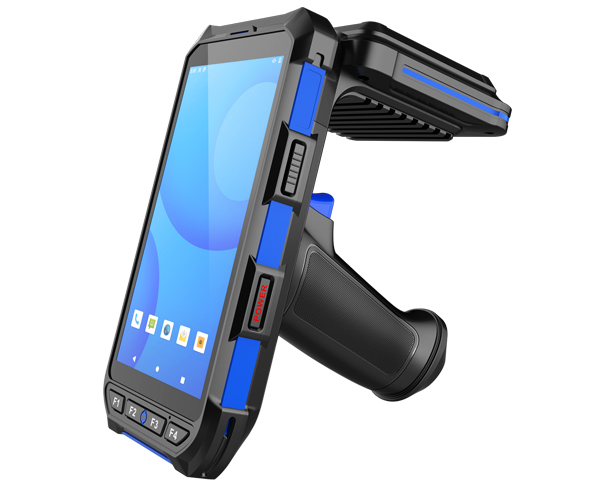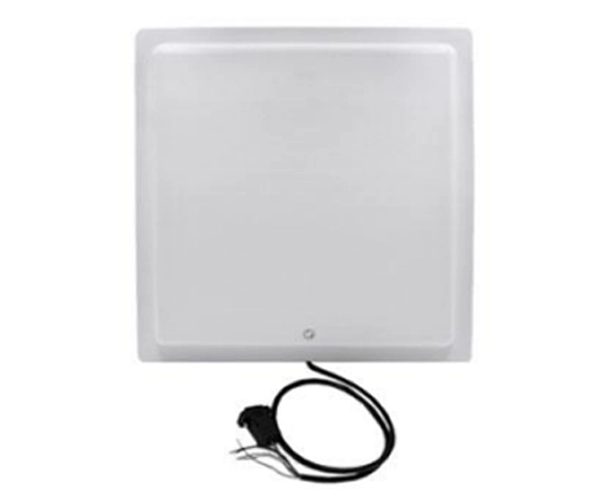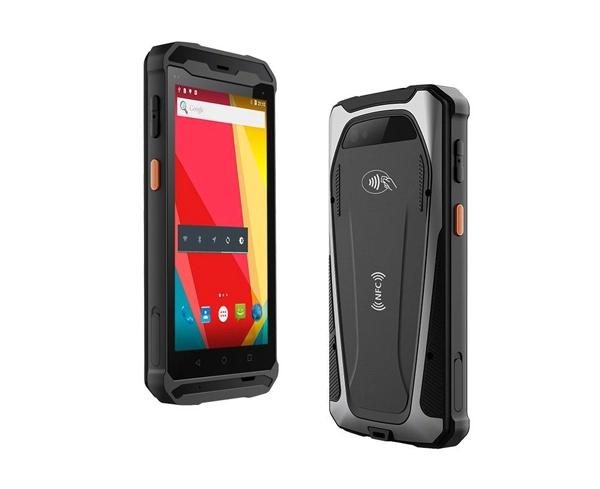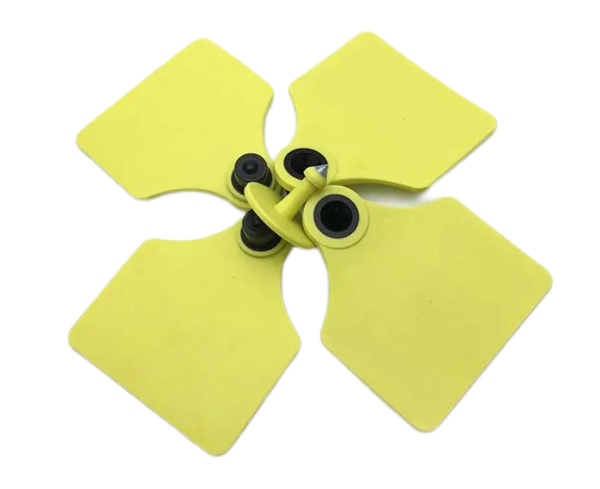Radio frequency identification (RFID) technology is spreading across a large number of industries, including livestock. Using RFID for livestock management is becoming the norm rather than the exception.
KEY TAKEAWAYS
- RFID tags are replacing traditional metal ID tags in livestock management.
- Animals receive RFID ear tags that are tracked by stationary and handheld readers.
- Farmers use RFID to identify and track livestock inventory, as well as record essential health data for each animal.
- Governments around the world are encouraging the technology’s use to better manage animal diseases.
HOW RFID IN LIVESTOCKS MANAGEMENT WORKS
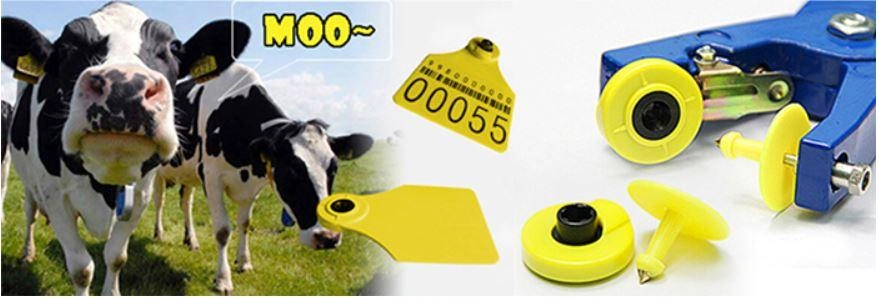
In livestock management, RFID is used to identify and track individual animals, including cows, bison, pigs, goats and more. A tamper-proof RFID tag in a durable plastic case is attached to the ear of each animal via an easy-to-use applicator tool. Many tags are composed of two discs joined together through the animal’s ear, usually shaped like a disc, strip or flag. The process is similar to piercing a human ear. Each tagged animal is assigned a unique tracking number, and RFID readers identify each animal via its RFID tag.
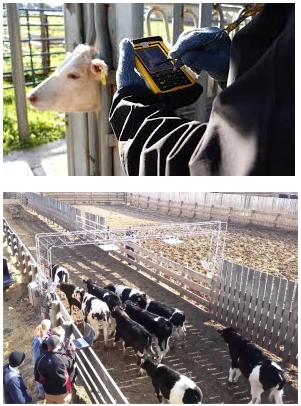
Farms can use either portable or stationary RFID readers to interrogate the tags. Stationary readers can be incorporated in gateways that cattle walk through, or as part of the traditional scales used to weigh the animals. The data collected from the readers is fed into the facility’s computer system, which can be connected via the Internet to cloud-based tracking systems.
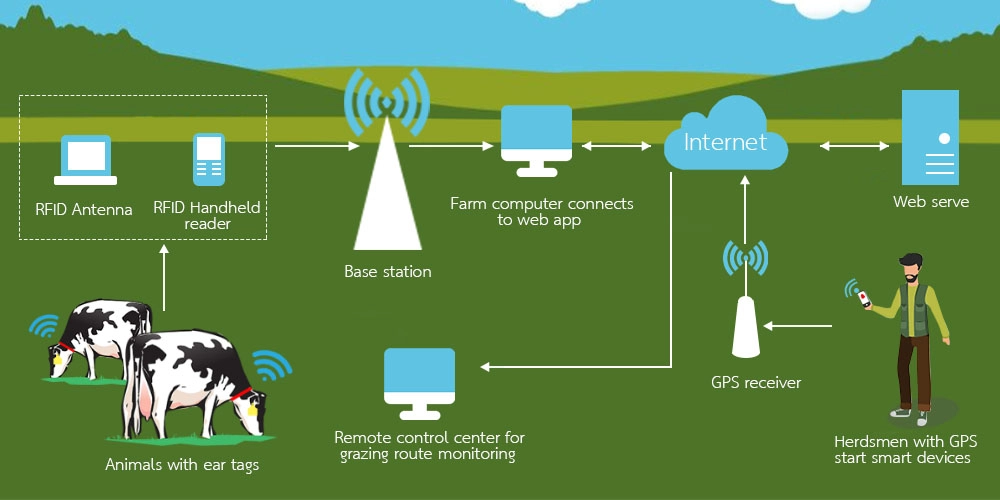
BENEFITS OF RFID TRACKING FOR LIVESTOCK
The general advantages of using RFID technology is that animals can be automatically identified (by the animals unique ID number) without handling the animal.
RFID tags let farmers do more than just identify individual animals. The tags and accompanying software can store an animal’s entire history, including its weight, age, sex, birthing time, offspring and medical records. This enables veterinarians, for example, to simply scan an animal’s tag to obtain detailed information about that animal’s health. It’s all part of a trend toward “smart farming” that uses Internet of Things (IoT) technologies to manage all aspects of livestock management. With the right data collected, farmers can better manage milking, feeding, breeding and other activities from birth to slaughter. Farmers who embrace RFID technology gain a competitive advantage over those who continue to use traditional tracking methods.
RFID provides a number of important benefits, including:
- Authentication of animals
- Enhance consumer protection
- Improve disease prevention, faster identification of diseased animals
- More accurate tracking of cattle inventory, strengthen the present tracing and tracking system
- Control and crisis management
- Time and labor savings, reduction of labor costs
- Reduce administrative tasks
- Reduce paper tasks
- Brand protection
WHAT IS RFID ?
RFID is contactless technology, which uses air interface (electromagnetic waves) to communicate with the environment. In the graphic below, the object is a pig that has an RFID ear tag attached to its ear on which information has been stored.
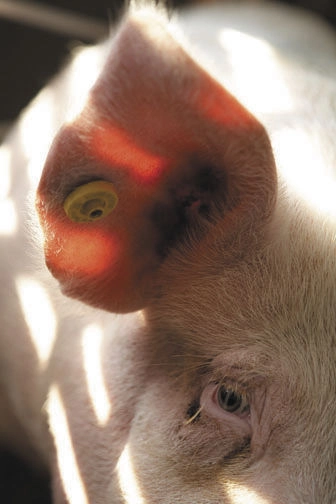
The circular shadow visible in the animal ear tag, is an embedded UHF inlay.
The chip is embedded into standard animal tags available on the market. The read distance, using a 2W reader, is two to three metres using an animal ear tag size of 25 to 27mm.
An enabled Radio-Frequency IDentification (RFID) UHF animal tag is a technology, in which a passive UHF Inlay is embedded (not visible) into a standard animal tag, produced at temperatures of up to 220°C and uses the latest IC Technology from the company Impinj – Monza4D chip.
The UHF animal tag functions without line of sight and has the robustness of standard animal tags.
Several common frequencies (e.g. LF, HF, UHF) are used worldwide, and depending on the application, the appropriate frequency is chosen.
This is because LF, HF or UHF has its own strengths and weaknesses. Table 1 is an overview of available frequencies, standards.
| Frequency Range | Low Frequency (LF, 125-135KHZ) | High Frequency (HF, 13.56MHZ) | Ultra High Frequency (UHF, 860-960MHZ) | Microwave (2.45GHZ) |
| Read Range | < 70cm | <1m | <8m | >10m |
|
Application | e.g. Animal Tagging, access control, vehicle identification, and container tracking in waste management. | e.g. Libraries, access control, smart cards and ticketing. | e.g. Logistics, baggage handling, toll collection and supply chain management. | e.g. Toll Collection, real time goods tracking and production line tracking. |
| Read Multiple Tags (Bulk) | poor | good | Very good | good |
| Effect on human body and water | none | attenuation | attenuation | attenuation |
| Effect of metal | disturbance | disturbance | attenuation | attenuation |
| Tag/Inlay size | huge | big | small | Very small |
|
Cost considerations | A larger antenna is required as compared to other RFID systems, resulting in high tag cost. | Less expensive than LF tags. Best suited for applications that require moderate range. | UHF tags are cheaper than LF or HF tags due to recent advances in IC design. | Microwave systems are expensive as compared to LF, HF and UHF RFID systems. |
Generally, the standard technology used for livestock identification and managements systems is LF – 134 kHz.
However, the livestock industry is beginning to focus on UHF technology for animal tagging solutions, due its advantages in comparison to LF 134 kHz (Table 2).
|
| Low Frequency (LF) | Ultra High Frequency (UHF) |
| Frequency | 125-134.2KHZ | 860-960MHZ |
| ISO Standards | 11784/11785 | EPC global & ISO18000-6C |
| Memory Size | < 64 bit (not ISO) | < 512 bit |
| Coupling | Magnetic | Electromagnetic |
| Distortion | Ok – Fluids | Can be attenuated – Fluids |
| Read Rate | < 10/second | < 300/second |
| – Read (R) – Write (W) – Overwrite (O) – Unique Identification (UID) | R/O, R/W | R/O, UID, R/W |
| Multi-Tag Read (bulk reading) | No | Yes |
| Read Distance | < 70cm (mobile readers 20-30cm) | < 8m (mobile readers with 1W output power 3-5 m) |
| Costs | Tag < 2,00€ depending on volume | Tag < 0,60 € depending on volume |
UHF ANIMAL TAGGING PROJECTS
In Europe, a high volume of pig farms that are participating in pilot projects of pig tagging projects; that way, testing continues to be conducted under various field conditions involving the tagging of animals from a few weeks old until slaughter. The production sites vary in holding, workflow and environment.
To date it can be stated, that the read rate of UHF ear tags have exceeded expectations (close to 100 per cent read rate) with a read distance of two metres (approximately 6.5 feet – using 2W readers), in comparison to LF with a read distance of just 20 to 30cm.
Variables that have been, and are under further investigation, are for example the pigs’ ear, where best to position the ear tag to achieve the best read, or how damaged or dirty a UHF tag can be, before it ceases to function. Bulk reading (reading groups of pigs in various numbers – in ms) is also an important element, which caused no concern either in the pigsty or in transit.
The RFID solution consists of UHF stationary (circular polarized) and mobile readers, UHF ear tags and software for data collection.
With UHF technology famers will be able to focus on running their operation with less administrative tasks, a clear overview of their animals history and a reliable tracing and tracking system.
HOW WILL THE MEAT PRODUCTION INDUSTRY , RETAILER AND CONSUMER BENEFIT FROM RFID?
With quality standards rising, the fear of contaminated food, production efficiency (CO2) and resources management, consumers and commerce wish to be informed in far more detail on the product which is being purchased.
The advantages to have an automated tracing and tracking system in place, that identifies the individual animal broken down into its constituent parts, are numerous:
The meat production and retail industry will for e.g. have improved visibility, real-time data, improved stock management, facilitate product recalls in the event of a contaminated batch, brand protection, quality improvements, customer satisfaction, customer loyalty, consumer protection and improved crisis management.
The consumer will enjoy peace of mind, stay in good health and be a recurring customer!
If you are interested in more information, you will find it in our products page. Or you can contact us.
